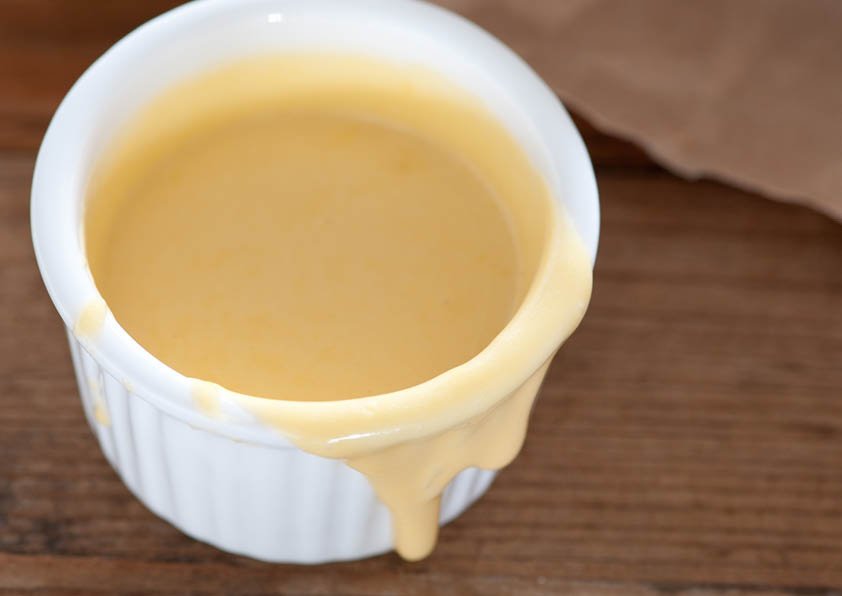Photo by jules:stonesoup
Sauces are, of course, a crucial element of French cuisine, and the French cook can recreate the canon of sauces from a limited set of techniques and ingredients. Here’s a quick run down of some very basic sauce-stuff:
Basic French Sauce Descriptions
Béarnaise:
A relative of hollandaise, béarnaise is a reduction of vinegar, tarragon and shallots that is finished with egg yolks and butter.
Béchamel:
Add milk or cream to a white roux and voila! it becomes a béchamel.
Hollandaise:
A hollandaise uses butter and egg-yolk as its liasons. It is served hot with vegetables, fish and eggs — like on eggs benedict.
Liaison:
A liaison, or binding agent, is the base of any French sauce. Sometimes called a binder, egg yolks, butter, flour, and puréed vegetables, are all liaisons.
Reduction:
A reduction is the mixture that results from rapidly boiling a liquid (like stock, wine, or a sauce)and causing evaporation — “reducing” the sauce. The reduction is thicker and has a more intense flavor than the original liquid.
Rémoulade:
This classic sauce mixes mayonnaise, mustard, capers, chopped gherkins, herbs, and anchovies.
Roux:
Roux, a combination of flour and a fat, often butter, is perhaps the best known liaison. A roux can be white, blond, or brown, depending on ingredients and cooking time.
Velouté:
Mix a white roux with white stock (light chicken or veal stock) and it becomes a velouté.
How To Ruin a Sauce
“An essential point in the making of sauces is the seasoning, and it would be impossible for me to lay too much stress on the importance of not indulging in any excess in this respect. It too often happens that the insipidness of a badly-made sauce is corrected by excessive seasoning; this is an absolutely deplorable practice”
From The Escoffier Cookbook, by A. Escoffier New York: Crown, 1941.
